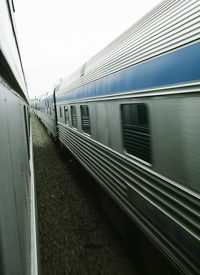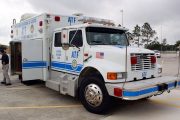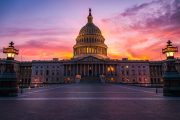
The revised proposal would reduce its price tag by merging the rail with commuter lines in the San Francisco and Los Angeles areas. Around $1 billion in voter-approved bonds will be available to upgrade existing tracks, which state officials claim will make rail service more efficient and potentially attract more customers.
"This project, like the state highway system or the water project, will transform the California economy and help it remain one of the most innovative in the world," said Michael Rossi, a member of the rail authority board and adviser to California Governor Jerry Brown (D).
The newly minted plan expedites completion of the first true U.S. high-speed rail system, moving it to 2028, trimming the project timeline by five years and shaving $30 billion off the original budget drafted last year by the California High-Speed Rail Authority. In 2008, when residents first voted to authorize the bonds, they were told the overall cost of the project would be $45 billion — and four years later, the total became $98 billion. The new proposal has reduced that number to $68.4 billion, still $23.4 billion more than the original total.
Despite the purported cost savings, the rail system still relies heavily on shaky federal funding and speculative private-sector investments. "We've seen numbers in the $30 billion, $40 billion, the $90 billion range, and now we're back in the $60 billion range," Sen. Joe Simitian (D-Palo Alto) affirmed. "I think there is understandably both some confusion and skepticism about what is the system going to cost, and then there's the question of where is the money going to come from?"
In total, less than $13 billion in funding has been procured, including $9 billion in voter-approved construction bonds and $3.5 billion in money from the federal economic stimulus law.
Much of the remaining cost is projected to come from fares and private investors, but another key source officials are touting is California’s new industrial cap-and-trade program for greenhouse-gas emissions. However, legal questions have been posed about whether those fees, which could be anywhere from $660 million to $3 billion in the first year of the program, can be used to help fund the rail line.
The state’s cap-and-trade program, which is slated to commence in November, requires California businesses to purchase permits from the state to offset their greenhouse-gas emissions. Companies that satisfy their emission cap can sell credits to other companies — hence the name, "cap-and-trade." Some critics have questioned the legality of the cap-and-trade system itself, as industry leaders claim that certain utilities are receiving preferential treatment.
Due to reluctant private investors and an ardent segment of Congress that has vowed to terminate all federal funding for high-speed rail, the likelihood that the state would need to tap these cap-and-trade funds is great.
Opponents of the rail system, one of the largest public works project in decades, have sought to exploit the flagrant funding gaps. One critic of the plan, Sen. Doug LaMalfa (R-Willows), branded the project as a "bait-and-switch" measure with a $55-billion funding gap.
John Coupal, who heads the Howard Jarvis Taxpayer Association, claims that the chance of coming even close to filling the funding gap is slim, especially considering staunch Republican opposition in Congress and the fact that private investors are reluctant to pledge support. "It is clear that this project is not the project that was presented to voters in 2008, and if it is to be pursued it needs to go back on the ballot," Coupal averred.
Stanford Professor Richard White, writing for the San Francisco Chronicle, described the California high-speed rail line as a "build it, and they will come" project. The transcontinental railroads, he wrote, were similar projects — and they bred catastrophe, repeatedly going bankrupt and adding to the corruption that branded 19th-century America as "the Gilded Age." Moreover, Professor White averred:
High-speed rail in California has just gone through its latest devolution. It has become a lesser version of itself without shedding its greatest problems: It has no clear source of funding; it cannot attract private investment and thus depends on public subsidies. There is no evidence that large numbers of people — and the numbers need to be very large for it to even pay its operating costs — will climb onboard. It remains a "build it, and they will come project."



